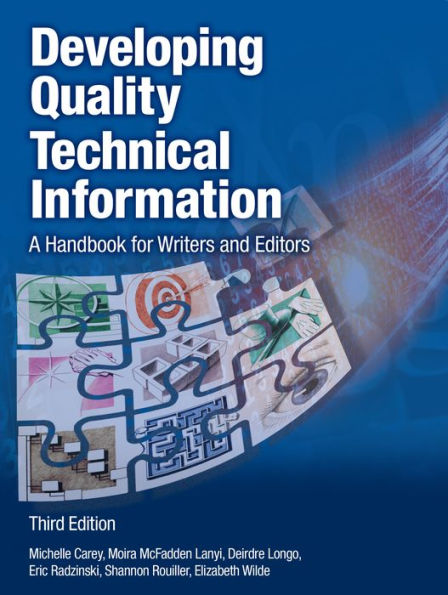The #1 Guide to Excellence in Technical Communication—Fully Updated for Embedded Assistance, Mobile, Search, Multimedia, and More
Direct from IBM’s own content design experts, this guide shows you how to design product interfaces and technical information that always place users front and center. This edition has been fully revised to help you consistently deliver the right content at the right time.
You’ll master today’s best practices to apply nine essential characteristics of high-quality technical information: accuracy, clarity, completeness, concreteness, organization, retrievability, style, task orientation, and visual effectiveness.
Coverage Includes
- Advocating for users throughout the entire product development process
- Delivering information in an ordered manner by following progressive disclosure techniques
- Optimizing content so that users can find it from anywhere
- Streamlining information for mobile delivery
- Helping users right where they are
Whether you’re a writer, editor, information architect, user experience professional, or reviewer, this book shows you how to create great technical information, from the product design to the user interface, topics, and other media.
- Thoroughly revised and updated
- Extensive new coverage of self-documenting interfaces and embedded assistance
- Updated practical guidelines and checklists
- Hundreds of new examples
The #1 Guide to Excellence in Technical Communication—Fully Updated for Embedded Assistance, Mobile, Search, Multimedia, and More
Direct from IBM’s own content design experts, this guide shows you how to design product interfaces and technical information that always place users front and center. This edition has been fully revised to help you consistently deliver the right content at the right time.
You’ll master today’s best practices to apply nine essential characteristics of high-quality technical information: accuracy, clarity, completeness, concreteness, organization, retrievability, style, task orientation, and visual effectiveness.
Coverage Includes
- Advocating for users throughout the entire product development process
- Delivering information in an ordered manner by following progressive disclosure techniques
- Optimizing content so that users can find it from anywhere
- Streamlining information for mobile delivery
- Helping users right where they are
Whether you’re a writer, editor, information architect, user experience professional, or reviewer, this book shows you how to create great technical information, from the product design to the user interface, topics, and other media.
- Thoroughly revised and updated
- Extensive new coverage of self-documenting interfaces and embedded assistance
- Updated practical guidelines and checklists
- Hundreds of new examples

Developing Quality Technical Information: A Handbook for Writers and Editors
624
Developing Quality Technical Information: A Handbook for Writers and Editors
624eBook
Related collections and offers

Product Details
| ISBN-13: | 9780133119022 |
|---|---|
| Publisher: | Pearson Education |
| Publication date: | 06/23/2014 |
| Series: | IBM Press |
| Sold by: | Barnes & Noble |
| Format: | eBook |
| Pages: | 624 |
| File size: | 22 MB |
| Note: | This product may take a few minutes to download. |
| Age Range: | 18 Years |
